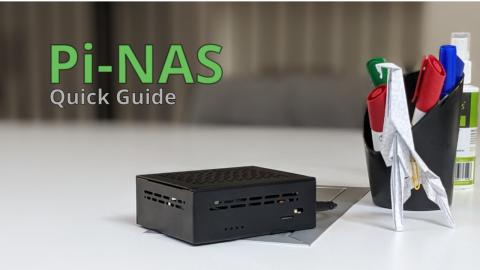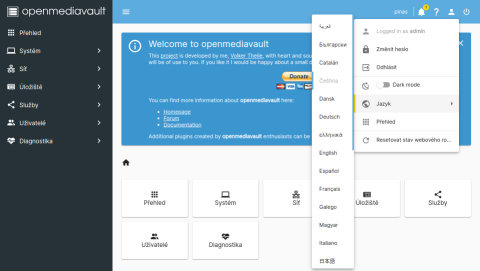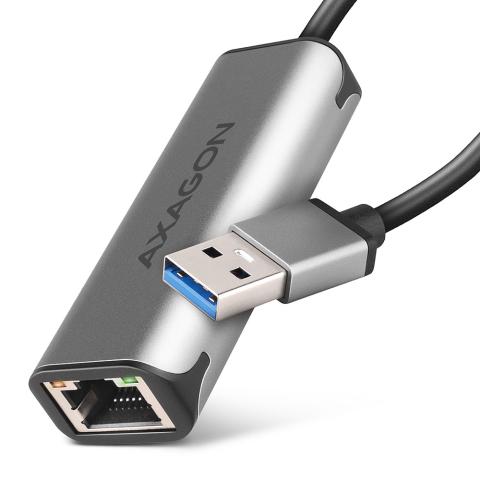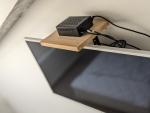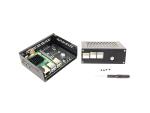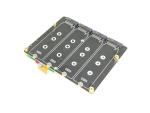Kategorie
Náš Pi-NAS
We are sharing with you a guide on how to build and install your own open-source NAS by yourself. For less technical users or those who are busy, we offer a pre-installed, ready-to-use open source NAS. Compared to many commercially available NAS devices, open-source solutions have a significantly better price/performance ratio, meaning you can invest in high-quality storage without excessive costs.
That's why we've prepared the third version of our Pi-NAS. Since the summer of 2024, we have been using only SSD drives. PiNAS is ideal for anyone looking for a reliable way to manage their data, including a detailed tutorial and a quick video guide that walks you through the initial setup step-by-step. We are here to make your journey to efficient storage easy without needing to understand every technical detail.
PiNAS is built on the popular Raspberry Pi 5 with 8GB of memory. It comes pre-equipped with an industrial-grade SD card pre-installed with Open Media Vault 7 software. Just connect NVMe SSD drives, plug it into the network, and after a few minutes of setup using our Quick Guide video, you can start using your NAS. For an even easier start, we also offer a version with pre-installed SSDs and prepared partitions.
Why did we choose SSD?
Due to the affordability of SSDs in recent years, the difference compared to HDDs is no longer as significant. SSDs offer several key advantages:
- Significantly faster access time - typically when copying a large number of small files such as photos or personal and work documents, you'll appreciate the increased speed.
- Higher read/write speed compared to HDD - you may encounter the limits of your home/office network (usually 1 Gbps, which is around 125 MB/s) or WiFi network.
- Silent, no vibrations, no mechanical parts
- Minimal energy consumption
- Compact size
Will you benefit from a faster network?
Raspberry Pi 5 comes with a standard 1 Gbps network card. Most home networks are similar, built on 1 Gbps switches and routers. However, if you're an enthusiast and have upgraded your home or small business network to 2.5 Gbps or higher, you can get an external USB network adapter supporting 2.5 Gbps. This will increase your SSD speeds from 125 MB/s to up to 270 MB/s.
Axagon ADE-25R - 2.5 Gbps USB Network Adapter
How to back up data on NAS?
Let's discuss the question of data backup. Simply copying photos, videos, or work documents to your NAS isn't enough. The disk in your NAS could fail. In such a case, you can use protection through either RAID or automatic backup to another disk, e.g., via rsync.

In our case, we recommend the second option: backing up data from disk A to disk B every night. The key is the "archive" function or the "--ignore-existing" parameter, which ensures that data not present on the source disk A is not deleted.
This approach offers a few advantages:
- Protection against accidental deletion
- Protection from ransomware that may change file names
The downside is that the backup disk fills up faster. However, it's easy to delete the data on the backup disk and create a fresh copy.
What’s next? Are my data secure now?
No. We recommend following the 3-2-1 strategy, meaning having at least three copies of your data, on two different media, with one offline. Two copies are on the NAS. The third copy should be stored on an external HDD, kept offline and offsite—for instance, at your parents', siblings', or a trusted neighbor’s house. Once a year, refresh this copy. You can use an external HDD connected via USB directly to your NAS. This offers added protection, especially against theft or fire.
All versions of our Pi-NAS can be found in our e-shop, including detailed specifications here.
Additional images of the open-source PiNAS:
